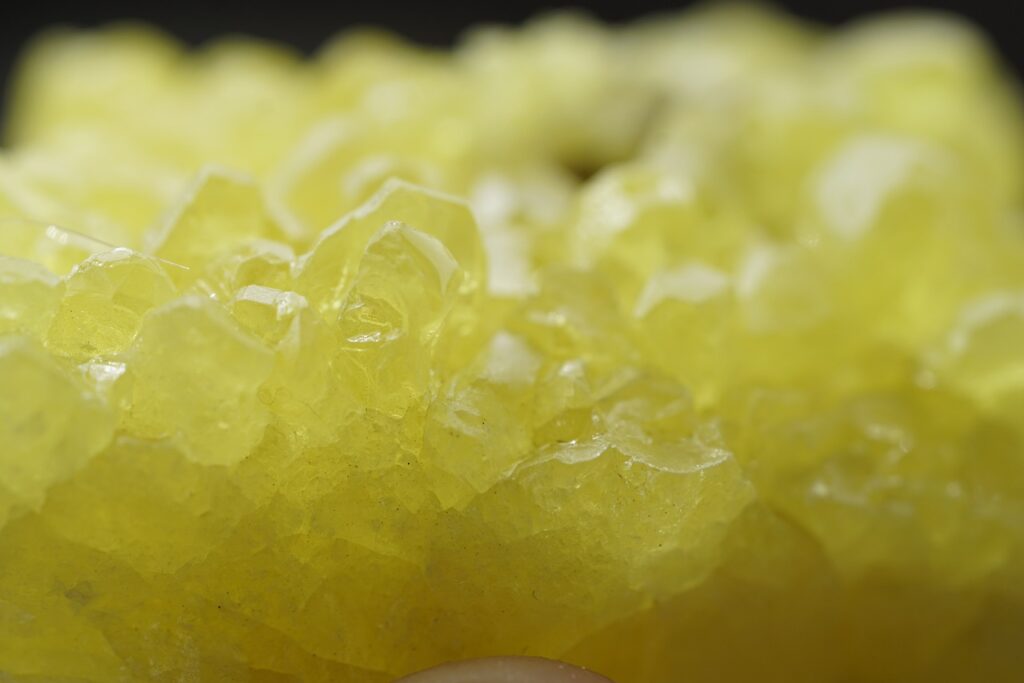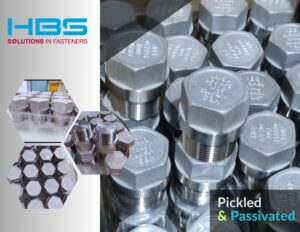Sulfur (S), a Bane or a Boon for Your Fastener?
Selecting the right material for fasteners is essential to guaranteeing their strength, resilience to environmental changes, and longevity. Sulfur (S) is one of the components that significantly affects the characteristics of fastening materials. So is sulfur bad for your fasteners or good for them? The answer is complex because, depending on the material under question and its concentration, sulfur can have both beneficial and detrimental effects.

The Impact of Sulfur in Fasteners
Steel frequently gets sulfur added to it to make it more machinable. This is due to the fact that sulfur causes manganese sulfides (MnS) to develop in the steel, which relieve stress and facilitate cutting. This can be advantageous in the fastener manufacturing industry since it minimizes tool wear and enables higher production speeds.
But sulfur has drawbacks as well. Excessive sulfur concentrations might cause the steel to undergo brittle phase development, which can drastically impair the fastener’s toughness and ductility. This increases the fastener’s vulnerability to breaking under pressure or collision, particularly in chilly conditions.
What Happens if There’s Too Much Sulfur?
Longitudinal manganese sulfide inclusions may occur in steel when the sulfur level is excessive. These inclusions serve as the material’s weak spots and increase the risk of an early fastener failure. This is especially problematic in applications where fasteners are exposed to corrosive conditions or dynamic loads. Under such circumstances, sulfur content may change from improving machinability to creating a structural weakness.
The Case of ASTM A563 DH Nuts
The ASTM A563 DH specification is one important source of information for controlling the amount of sulfur in fasteners. In high-strength structural applications, where the fastener’s mechanical qualities and long-term dependability are crucial, ASTM A563 DH nuts are usually employed.
The standard for ASTM A563 DH nuts permits a sulfur level between 0.05% and 0.15% as long as the minimum manganese content is 1.35%【note: E】. The purpose of this particular criteria is to achieve a balance between mechanical strength and machinability.
Here, manganese is quite important. When manganese and sulfur combine, manganese sulfides are created that are less harmful to the toughness of steel than iron sulfides. Higher sulfur levels may produce brittleness, thus the standard attempts to counteract that by guaranteeing a minimum manganese concentration of 1.35%. This keeps the nut’s mechanical qualities intact while allowing for some wiggle room in the sulfur concentration.
In real words, this means that producers may still ensure that the final product has the strength and toughness required for demanding applications, even though they can mill ASTM A563 DH nuts with a little higher sulfur content. The integrity of the structures that depend on these fasteners must be preserved, and this balance is essential.
The Relationship Between Sulfur (S) and Phosphorus (P)
Steel frequently contains both sulfur and phosphorus, which have a complicated relationship. Another element that can affect steel in both positive and negative ways is phosphorus. Similar to sulfur, phosphorus increases the material’s tendency to become brittle while simultaneously improving machinability.
It’s interesting to note that phosphorus can counteract some of the harmful effects of sulfur. Phosphorus, by lowering the size of the manganese sulfide inclusions and refining the grain structure, can assist increase the strength and toughness of steel when both elements are present in appropriate amounts. This equilibrium is essential to guarantee that the material’s fasteners have adequate mechanical strength and high machinability.
Examples of Materials with Different Sulfur Content
Different materials have varying levels of sulfur, which affects their suitability for different applications.
- ASTM A563 DH Material: As previously stated, high-strength nuts for structural applications are made of this material. ASTM A563 DH is intended to provide a blend of toughness and machinability. It has a minimum manganese level of 1.35% and a sulfur content between 0.05% and 0.15%. For crucial situations where the fastener must function dependably under load, this makes it the perfect option.
- High-Sulfur Materials: Sulfur concentration is typically greater in free-machining steels (such 12L14), ranging from 0.15% to 0.35%. They are highly machine-friendly due to their high sulfur content, but this also greatly lowers their durability, which makes them inappropriate for high-stress applications.
- Low-Sulfur Materials: The sulfur content of steels like ASTM A325—which are used for high-strength structural bolts—is normally less than 0.04%. These materials are suited for essential applications where fasteners must function consistently under stress because they place an emphasis on strength and toughness over machinability.
Depending on the use and concentration, sulfur can either be a curse or a blessing for your fasteners. Sulfur can increase machinability, but too much of it can cause brittleness and early failure. Phosphorus and sulfur have an important interaction since the latter can lessen some of the former’s adverse effects. Knowing these dynamics is essential to choosing the proper material for your fasteners and making sure they work as intended.
Manufacturers may create fasteners that satisfy the needs of even the most demanding settings by carefully controlling the sulfur concentration in materials like ASTM A563 DH. This allows manufacturers to achieve a balance between mechanical strength and machinability.
Pickling and Passivation: Spotless surface and weatherproof coating for stainless-steel fasteners. A suitable surface treatment is crucial to guaranteeing the performance and lifespan of fasteners. Two popular techniques for this
defence Fasteners play a critical role in the defence industry, ensuring the strength and reliability of military equipment and vehicles. Designed to withstand extreme stress, harsh environments, and corrosion, these
Understanding the 4D and 5D Elongation Tests in Fasteners: ASTM Standards and Material Performance When it comes to fasteners, ensuring they meet the necessary standards for performance and durability is





Su kaçağı tespiti Üsküdar Hızlı servis ve kaliteli işçilik. Üsküdar’da su kaçağı tespiti için tek adresim! https://ourfamilylync.com/read-blog/21817
Üsküdar su kaçağı bulma cihazı Üsküdar’daki su kaçağı sorunumu birkaç saat içinde çözdüler, çok memnunum. https://padmanayakavelama.com/read-blog/30308
Uydu ayar hizmeti Malatya Uyducu Malatya merkezi uydu sistemleri konusunda çok bilgili, işlerini mükemmel yapıyorlar. https://suomalainennaikki.com/read-blog/3552
Ümraniye süpürge boru temizliği Süpürgem artık eskisinden daha sessiz çalışıyor. http://montrealpal.com/read-blog/5297